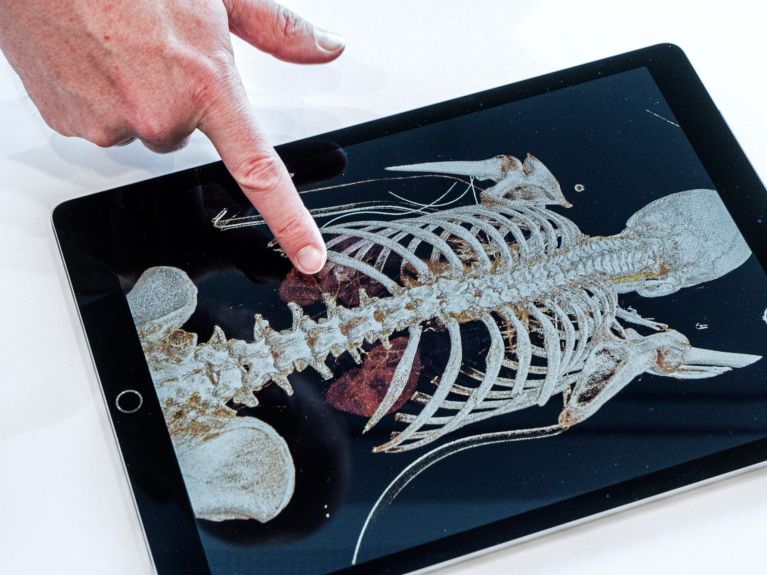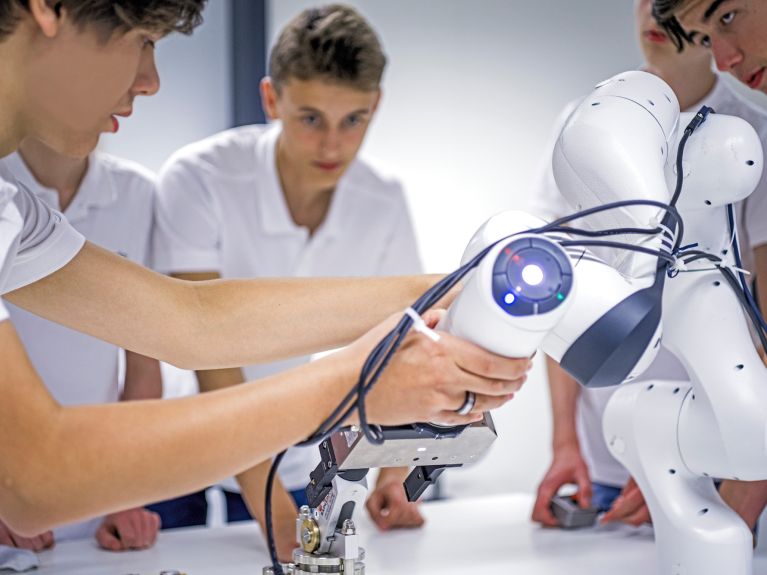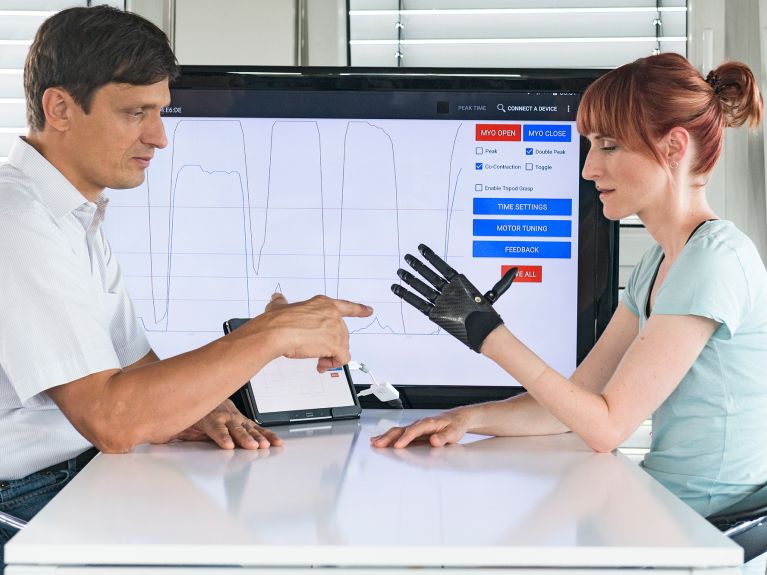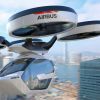To whom does the future belong?
Cinematic rendering, nimble robots and helping hands: these three clever inventions have been nominated for the German Future Prize.

Germany. Outstanding innovations are awarded the German Future Prize. Three teams are on the shortlist. Who will win?
Cinematic rendering
The Team surrounding Dr Klaus Dieter Engel from Siemens Healthcare has developed a method that makes images from inside the human body look very realistic and natural. Current imaging techniques such as computer tomography and magnetic resonance imagery are already able to show details of organs or tissue structures. But for lay people these images are still indecipherable. Now, with the help of a technique used for animation films, the scientists have managed to create understandable, photorealistic images. This helps doctors to explain damage to their patients’ bodies, the diagnosis of an illness or the process of a planned operation.
Robots as assistants
The specialists surrounding Professor Sami Haddadin at the University of Hanover have developed a new generation of robots. So far robots have been used in industry. They were inflexible, difficult to programme, and strictly separated from human beings in order to avoid accidents. But the new robots function as mechanical assistants to human beings. They are modular in design, ultra-light and equipped with sensitive sensors. Operation is supposedly as simple as using a smartphone. The possible applications extend far beyond the industrial sphere. Their use for healthcare in hospitals is already being planned.

Helping hands
The experts surrounding Dr Stefan Schulz from Vincent Systems have developed small, lightweight artificial hands. They are designed to help children and young people who need a hand replacement and for people who have part of their hand missing. Until now these patients could only be provided with large, heavy or passive prostheses. The new bionic prostheses are light and enable a sure grip. The integrated sense of touch is an innovation. It provides the wearer with information about the strength applied by transforming the power of the grip into gentle vibrations. It is already being introduced into the market.

The German Future Prize will be presented by President Frank-Walter Steinmeier on 29 November 2017 and is endowed with 250,000 euros.
